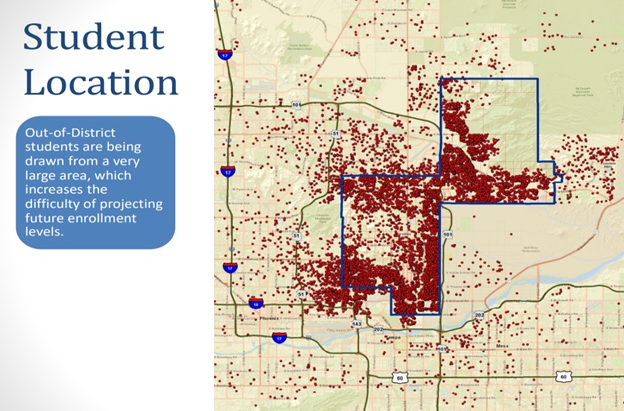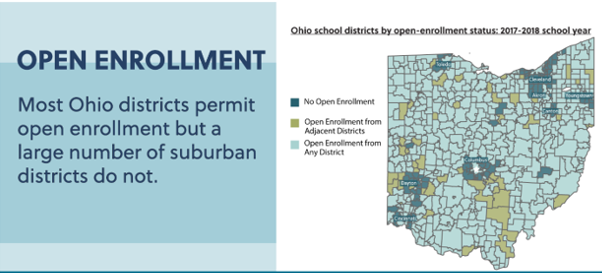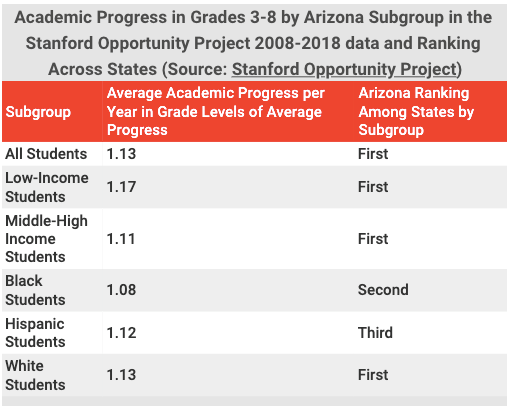 The passage of HB1, a bill which makes all Florida children eligible for education choice, will benefit low-income children remaining in public school. Arizona’s experience illustrates how this process works.
The passage of HB1, a bill which makes all Florida children eligible for education choice, will benefit low-income children remaining in public school. Arizona’s experience illustrates how this process works.
While choice advocates are celebrating a wave of universal ESA program passages in 2022 and 2023, Arizona lawmakers first passed a form of universal choice in 1994. That was the year that the Legislature passed the nation’s most liberal charter school law and a statute on district open enrollment.
The law required districts to have an open enrollment policy and forbade charging tuition to open-enrollment students. In 1997, the Legislature passed a third universal choice program in the form of the nation’s first scholarship tax credit program. Funding for this program grew over time but remained limited.
The main impact of the tax credit program probably lies in having allowed more private schools to remain open despite the advent of charter schools. Arizona charter schools became very popular, and crucially, were geographically diverse. Arizona has urban-focused charter schools, but charter school models also were embraced in suburban and rural areas of the state.
Open enrollment would not become a form of universal choice unless the districts chose to participate.
It is worth noting that in many states with voluntary open enrollment, the suburbs do not participate. See, for instance, this map from Ohio created by the Thomas B. Fordham Institute.
 In 2017-18, every urban area in Ohio was surrounded by suburban districts choosing not to participate in open enrollment. Meanwhile, in Arizona, the growth of choice and the advent of the Great Recession made non-participation in open enrollment untenable.
In 2017-18, every urban area in Ohio was surrounded by suburban districts choosing not to participate in open enrollment. Meanwhile, in Arizona, the growth of choice and the advent of the Great Recession made non-participation in open enrollment untenable.
Arizona has long boasted the nation’s largest statewide charter school sector as a percentage of total enrollment. When the Great Recession hit, statewide enrollment growth stalled for the first time since World War II, and an abundance of suddenly inexpensive property hit the market.
Charter enrollment surged, as did Arizona’s NAEP scores:
 Arizona charter schools and private choice deserve credit for this surge, but in part, indirectly. In combination with the fact that enrollment growth stalled, they opened the suburban districts to open enrollment. In the Phoenix area, open-enrollment students outnumbered charter students almost two to one.
Arizona charter schools and private choice deserve credit for this surge, but in part, indirectly. In combination with the fact that enrollment growth stalled, they opened the suburban districts to open enrollment. In the Phoenix area, open-enrollment students outnumbered charter students almost two to one.
The first image in this post is an enrollment map of Scottsdale Unified. Each red dot is a student, and the blue line is the district attendance boundary. Scottsdale Unified enrolls 4,500 students from outside the district because 9,000 students who live inside the boundary go to school somewhere else – other districts, charter schools, private schools and home schools.
In combination, the competitive pressure of these options transformed Scottsdale Unified from a guarded fortress into a choice operator.
Florida lawmakers have laid the groundwork for a dynamic system of schools in which families collectively will shape which schools expand, which replicate, and which lose students. This model worked very well for Arizona students, including for disadvantaged subgroups.
 Austrian and British economist and philosopher Friedrich August von Hayek, who was known for his defense of classical liberalism and free-market capitalism against socialist and collective thought, wrote:
Austrian and British economist and philosopher Friedrich August von Hayek, who was known for his defense of classical liberalism and free-market capitalism against socialist and collective thought, wrote:
“Our freedom of choice in a competitive society rests on the fact that, if one person refuses to satisfy our wishes, we can turn to another. But if we face a monopolist we are at his absolute mercy.”
It is vital to give disadvantaged students access to private and charter schools, but if you really want to improve their rate of learning, you also need to give them access to leafy suburban district schools. The embrace of universalism in our choice programs represents a major advance for low-income students.


